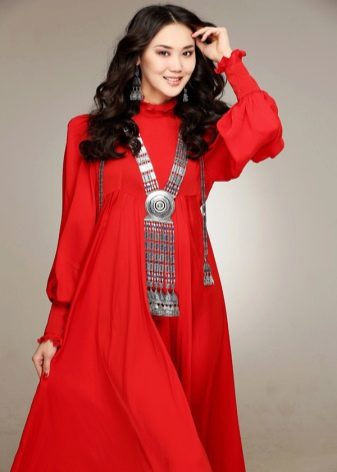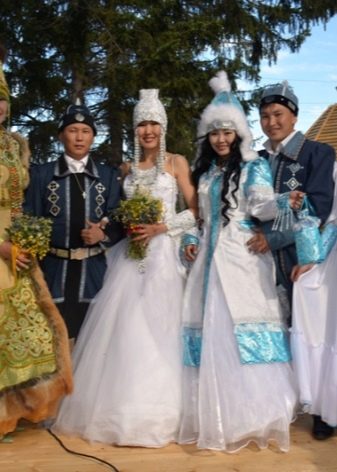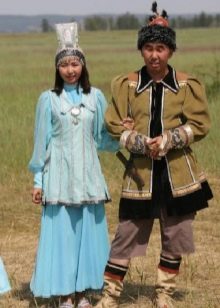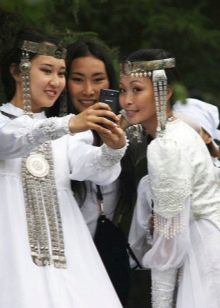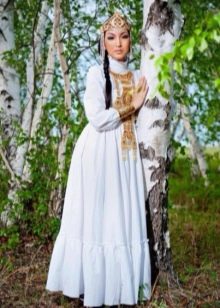Yakut national costume

National clothes of different nationalities often have a clear imprint not only of everyday life, way of life, but also of climatic conditions. For example, the Yakut national costume was created specifically for the difficult climatic conditions of the North. Of course, it also contains a certain number of elements borrowed from other peoples, but this does not at all create a negative impression of the Yakut costume.
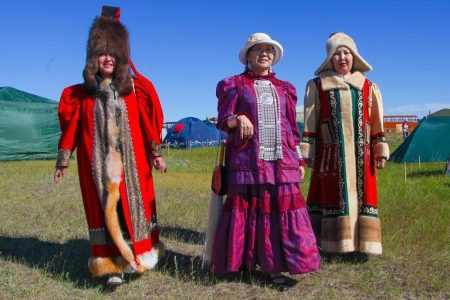
Historical reference
The Yakuts, as a national community, are currently most concentrated in Yakutia and the Krasnoyarsk Territory. A small number of people of this nationality can be found in the Magadan, Sakhalin and Amur regions.
The earliest examples of the national dress of the Yakuts are considered to be costumes that arose in the 13th century. Basically, these are outerwear with pronounced folk ornaments, decorations and elements. The national Yakut costume of that time was created from the fur of motley animals, rough cloth and silk, leather.


Already in the Christian era (17-18 centuries), a traditional set of outerwear was made from the skins and fur of domestic animals, since the main activity of the Yakuts was horse and cattle breeding. Suede, leather and fur of short-haired pets are especially popular. For additional insulation during especially frosty periods, Yakut craftsmen used animal skins with fluffy, long-haired fur. This version looked more like a decorative ornament of a classic national costume: fur stripes were sewn along the perimeter of outerwear, as cuffs on sleeves, and also wide warm collars.
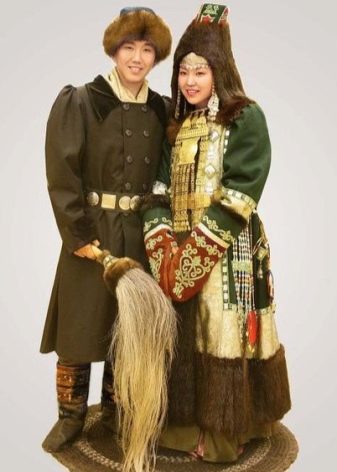

Cut features
Every folk dress is often based on a straight silhouette with the same sleeves. The traditional Yakut costume is no exception.
However, there are several variations in its "design":
- onoloh, buuktah. Yakut craftsmen, without undue hesitation, based this type of cut on the features of tailoring for the Russian military and avid travelers. Of course, it was not done without exclusively national inclusions. The name of this cut is due to the presence of folds on the back - "ono" and the original model of the sleeve - "buuk" (puff-shaped). Outerwear (most often a coat), sewn according to this principle, was worn in the same way by both men and women. The main materials for making Yakut national costumes of this cut were: leather and daba (Chinese paper fabric) - for men; fur and suede (depending on the season) - for women. Velvet stripes on the collar and cuffs served as decoration;
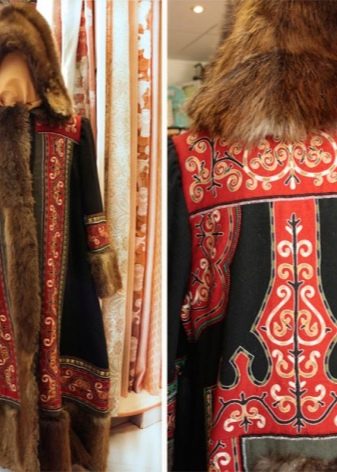
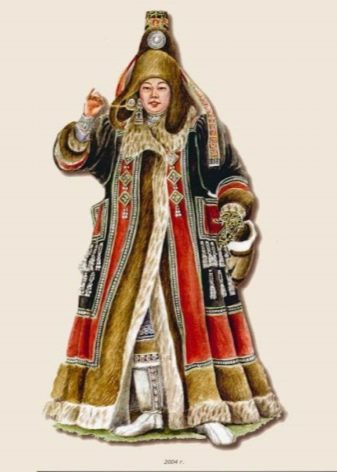
- kytyylaakh. It appeared in the Yakut everyday life much later than the first type of cut and differs from it only in some details. For example, a double wide cloth strip, which was placed along the edge of the side of the outer national clothing.
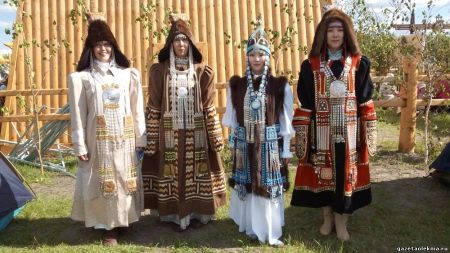
The main feature of the women's summer coat, made using the kytyilaakh cut, is the presence of red threads in the ornament that adorns the perimeter of the clothes and sleeves. In men's models, built according to the same principle, there are more strict and dull colors;

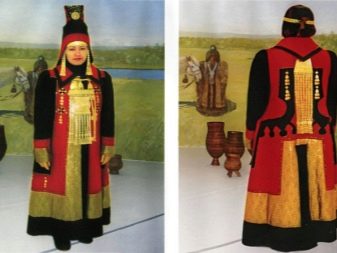
- tanalai. One of the most ancient types of cut. Traditional winter Yakut clothing, which was made of rovduga (deer or elk suede) using fur of fur animals. The peculiarities of this cut are the presence of a fur shoulder pad, which was located at the junction of the sleeve and armhole. Side slits, shiny metal pendants at the waist. Some historians insist that this type of cut was typical for wedding dresses.
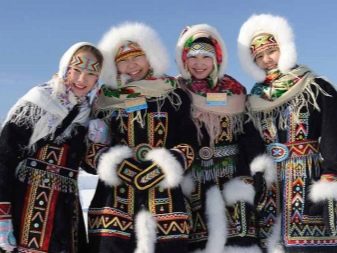
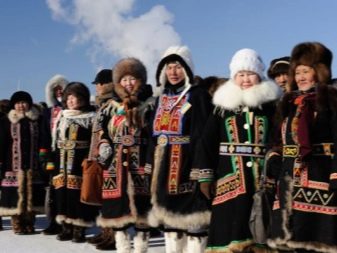
Basically, the female national costume of the Yakuts did not differ much from the male one. The main differences are the color design, the presence of additional decor, the use of various materials.
Women's Yakut costume
The main materials for the manufacture of traditional attire for women in Yakutia:
- everyday - practical and durable chintz and satin;
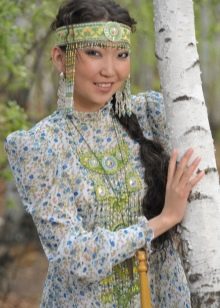
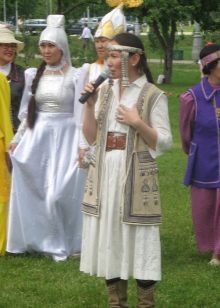
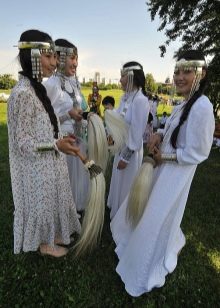
- festive - expensive, beautiful and shiny silk and satin;
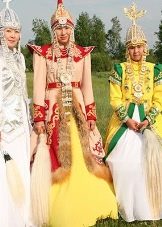

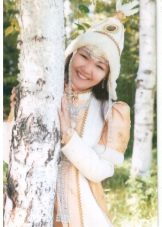
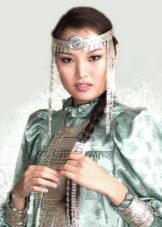
- outerwear - fur, suede with skilful addition of pieces of silk or fur national ornaments.


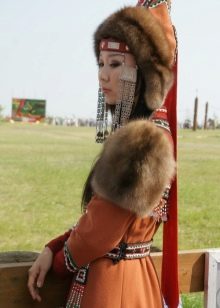
The national fur coat of an adult Yakut woman is called sanyyakh, made from the skins of wild animals: sable, wolf, wolverine or fox. This is one of the most important items in a bride's wedding dress. On the back, the skin was laid out in such a way that a pattern in the form of spread wings was obtained from the fur.
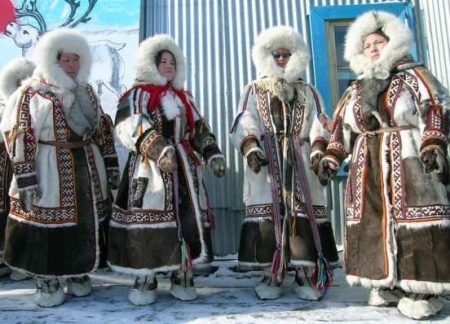
In general, the classic Yakut wedding wardrobe of a woman consisted of the main elements:
-
Annakh is a special piece of fabric that covers the face.
-
Underwear shirt made of coarse rovduga.
-
Leather pantaloons, which mainly cover the pelvic part of the bride.
-
Legs are special leggings made of the skin of a wild animal, which resembled boots, but ended in the ankle area, did not have a foot.
-
Fur coat is a warm fluffy coat.
-
A traditional headdress, which in its cut and appearance resembled a military helmet.
-
A large number of decorations. This element among the Yakuts was considered one of the most important in women's clothing. At the same time, everything was decorated: clothes, shoes, head, chest, hands. Yakut beadwork is especially popular to this day. Its foundations are passed on from mother to daughter.

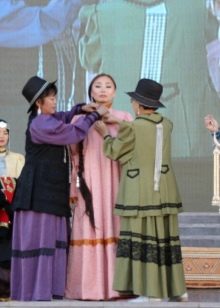

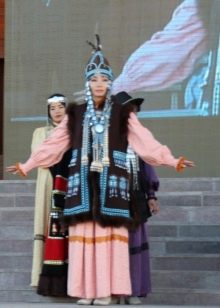
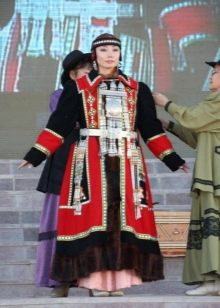
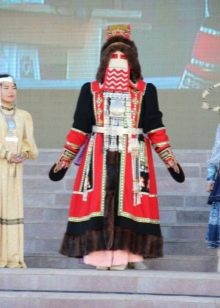
The costume of the Yakutian woman was exactly the same as the costume of an adult woman. It was typical for the girl to use the edge around the perimeter of the cap.
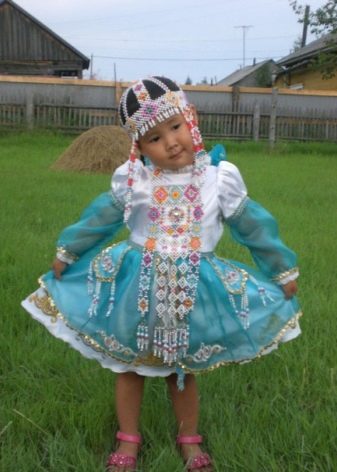

National Yakut costume for men
Of course, clothes for men differed from women in special modesty. The main feature was considered the presence of fur trim on the sleeves and collar.The pile height of such a finish could reach the maximum values. The headdress also necessarily resembles a helmet in its shape, it was made of natural fur and covered the ears, cheekbones and a little chin area from frost. At the end of such a Yakut hat, there was usually a full moon or sun, which signified the continuation of the family.
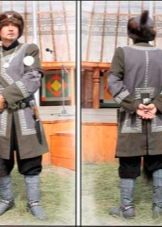
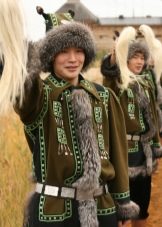
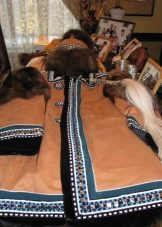
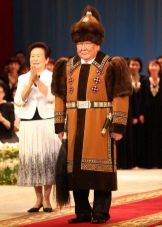
From childhood, Yakut boys wore national clothes, completely repeating, in their cut and decoration, the clothes of adult men.
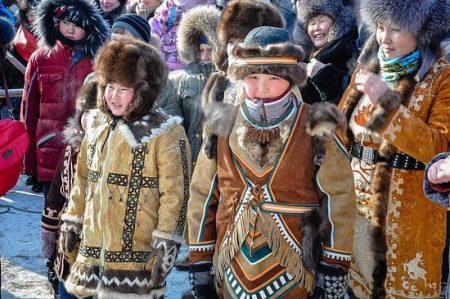
Costumes of indigenous Yakuts today
In the modern world, a wider range of fabrics, textures and decorations is used for the manufacture of national clothes. Today they are a national treasure and practically a special object of pride and national art worthy of museums and exhibitions. These are always expensive high-quality fabrics and furs, sewn and finished in the best Yakut traditions. Of course, modern designers have moved far enough from the ancient heritage, constantly making their own adjustments, their vision and their creativity.
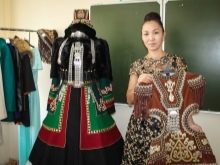
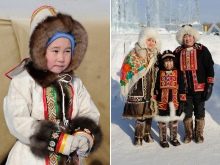

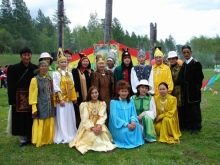
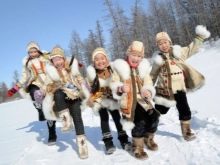
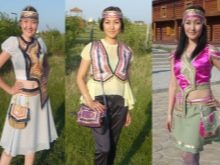
Yakuts today wear national clothes almost only on holidays. But jewelry with beads and furs continues to be used to this day.
